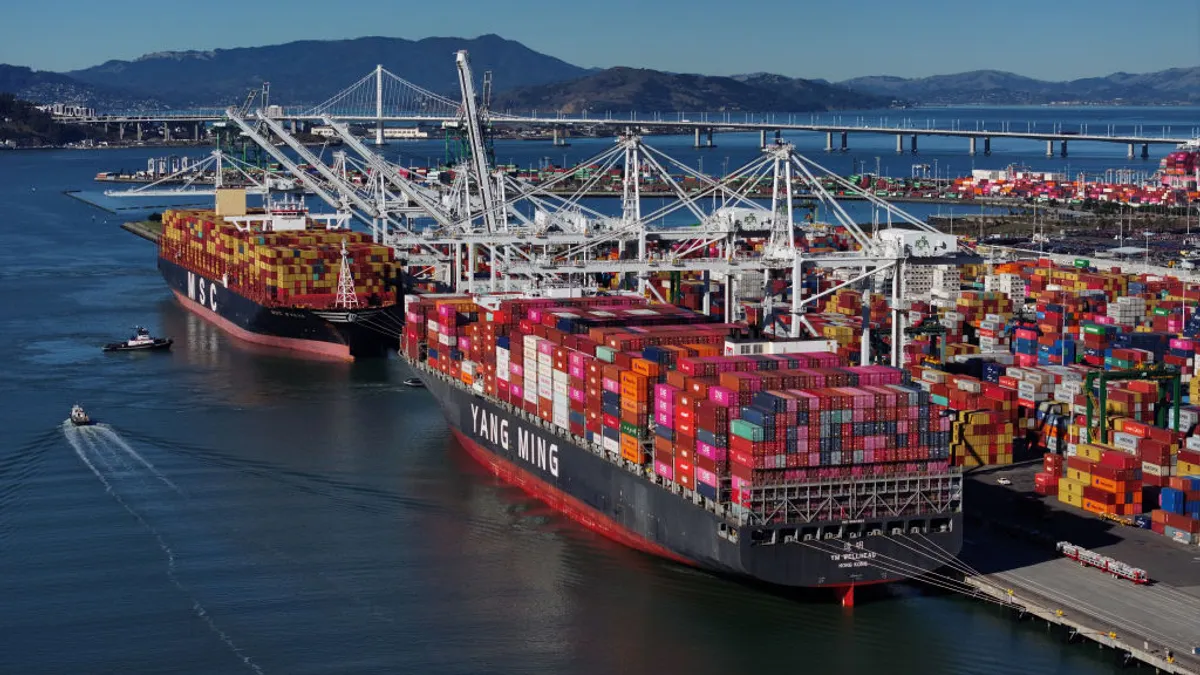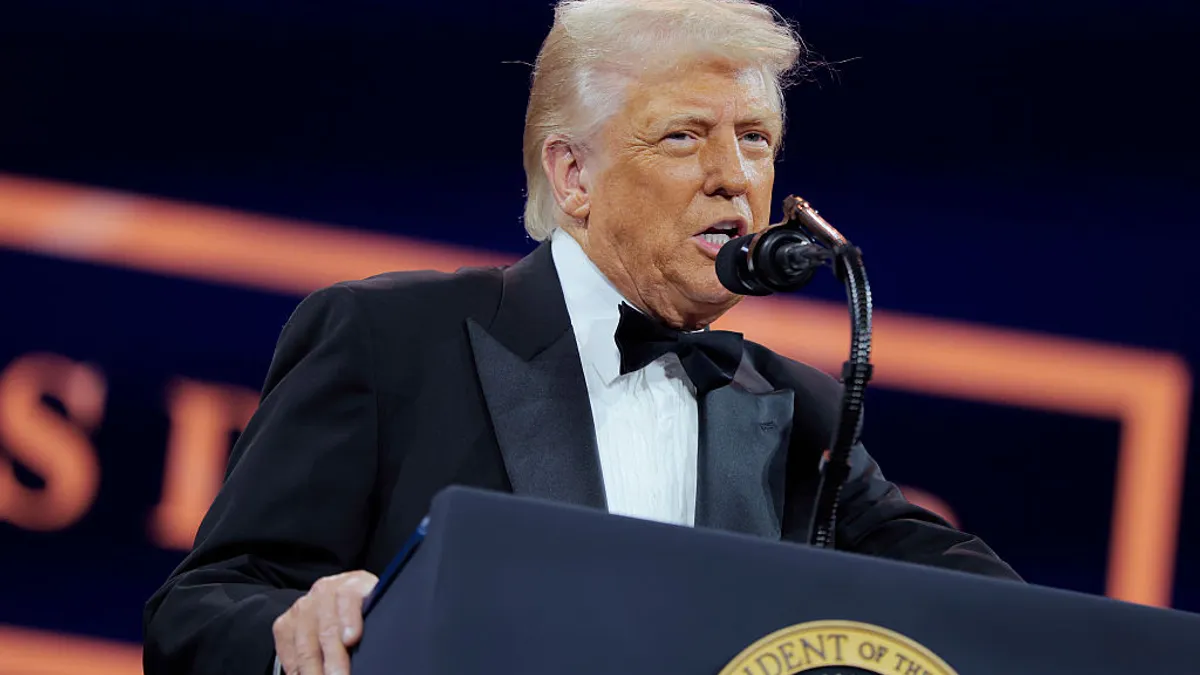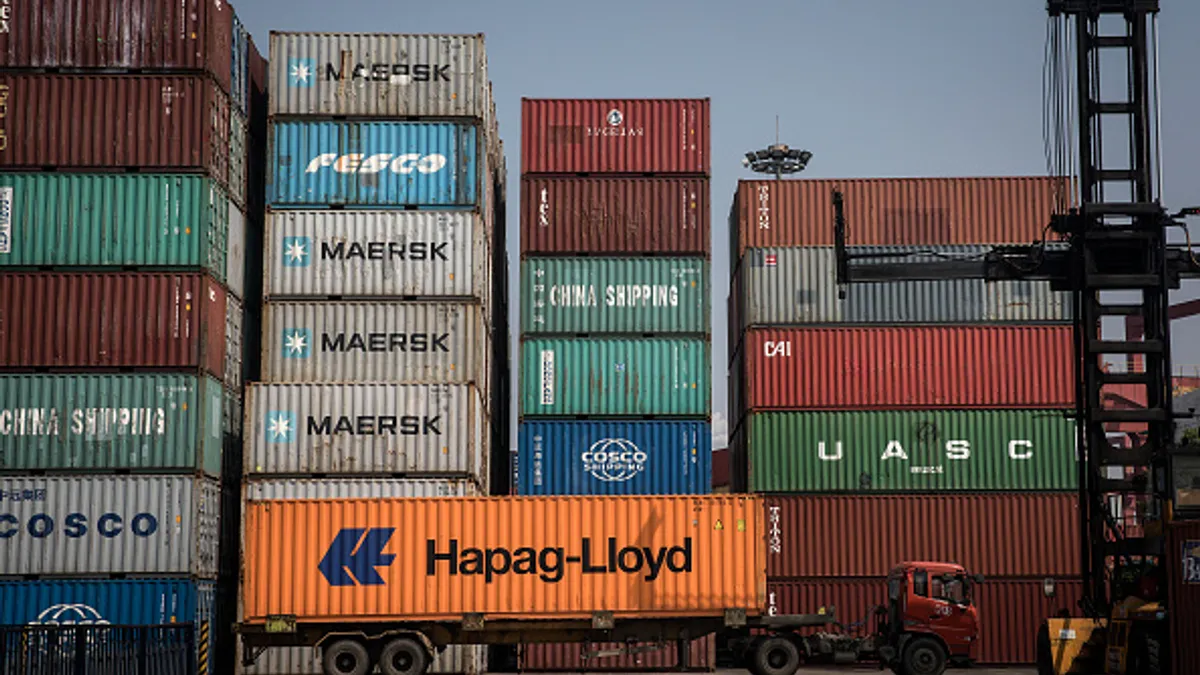It’s official: U.S. officials will meet with counterparts in Mexico and Canada as early as August this year to renegotiate the North American Free Trade Agreement (NAFTA), kicking off a complex process that could potentially redefine supply chains.
United States Trade Representative (USTR) Robert Lighthizer, confirmed by the Senate on May 11th, sent various letters of intent to renegotiate the trade agreement to congressional leaders on Thursday, May 18th, fulfilling one of President Donald Trump’s main campaign promises.
The letters begin the official process to renegotiate the trilateral trade agreement, which took effect in 1994, that has shaped the nation’s economy for roughly 23 years. The letters also mark the cautious end to a period of uncertainty, which had been previously dominated by President Donald Trump’s threats upon taking office to exit the agreement altogether.
The administration’s rhetorical hostility to the trade agreement had sowed fear in many industries, those which have spent the past decades altering their supply chains to make the most of free trade, not only within the trade bloc, but beyond as well.
Take the fashion industry for example – even though many of their products are produced outside the region, the industry has a deep-seeded interest in the agreement.
“Our duties are so high on textile and apparel that if it can be duty-free, you’re saving 17-20% of your costs,” Julia Hughes, president of the United States Fashion Industry Association, told Supply Chain Dive. "Since NAFTA first went into effect there was a lot of emphasis among textile and apparel companies to look at the supply chain and to look at the opportunity between Mexico and Canada and the US," she added.
Regardless of the industry, NAFTA had presented an opportunity to save costs. As a result, in the days since the USTR’s confirmation, various industries have written with a simple message: Improve NAFTA; or at least, “Do no harm.”
NAFTA needs modernization – everyone is in agreement about that.

Johan Gott
Principal, A.T. Kearney.
"I think [based on] the tone of the discussion, it looks like NAFTA is going to survive but it will be renegotiated," says Taneli Ruda, managing director of global trade for the tax & accounting business of Thomson Reuters, indicating that leaving the agreement altogether is no longer a viable option.
Yet, even with greater certainty of negotiations, amending NAFTA could take years. Nonetheless, a new agreement, in any shape, will have a monumental impact on cross-border business. As a result, supply chain managers should remain aware of the issues, timeline, and impactful scenarios if they want to be ahead of the curve in addressing new risks and opportunities.
Here’s a quick rundown of what we know, what Trump’s agenda might mean and a few tips for managers moving forward:
The ‘process’ started; what happens next?
Companies now can participate in shaping the policy debate, either directly or indirectly.
In advance of the projected start date of August 16, U.S. officials must officially publish negotiation objectives and consult with stakeholders to align objectives. Stakeholders include “America’s workers, farmers, ranchers and businesses,” per the USTR website.
To facilitate this alignment, the USTR will publish a notice on the Federal Register, requesting public input on the direction, focus and content of the NAFTA negotiations. Industry associations, chambers of commerce, state delegations and congressional leaders will likely lead the charge in issuing comments, but the process is open to other constituents as well.
Either after or concurrent with these consultations, but by July 16, the USTR must publish a list of negotiating objectives on its website. Several documents may provide hints – a leaked draft letter, the Trade Promotion Authority legislation and the USTR’s letters of notification – but the official points will be set in stone by this date.

From August 16 and onward, specific dates are uncertain. After each round of talks, trade delegates must return home to consult with stakeholders and decide on concessions and red lines. This process may happen one, two, three or 12 times until a deal is agreed to — but must happen prior to signing. Before the USTR may sign an agreement, he must provide Congress with a report and six months’ notice before proceeding.
While unlikely, the most expeditious scenario where only one round of talks takes place immediately in mid-August, followed by the USTR's report ready to go within days — a new NAFTA agreement could be signed as early as January 2018. Mexico in particular has made it clear it would prefer to expedite negotiations so that an agreement can be signed before its own presidential elections take place in July 2018, as a new President could backtrack any progress made.
To achieve Mexico’s timetable, the second-best possible scenario, ambitious but not impossible, would have a new agreement signed within a year of the start of negotiations this August.
“Ironically, we can expect most of U.S. demands on Mexico and Canada to be in line with the arrangement between the countries in the Trans-Pacific Partnership, torn up on President Trump’s first day in office,” says Johan Gott, a principal at strategy and management consultant A.T. Kearney.
Key issues to look for as Trump’s trade agenda emerges
The Trump administration leaked a draft letter of notification in March, which, in addition to the current letters and the Trade Promotion Authority legislation, offer hints on his main negotiating objectives.
“Our aim is that NAFTA be modernized to include new provisions to address intellectual property rights, regulatory practices, state-owned enterprises, services, customs procedures, sanitary and phytosanitary measures, labor, environment, and small and medium enterprises,” Lighthizer wrote in the letter of notification. Previous documents and reports have also specifically named rules of origin, digital trade, e-commerce and government procurement as potential negotiating objectives.
“Moreover, establishing effective implementation and aggressive enforcement of the commitments made by our trading partners … should be improved in the context of NAFTA,” Lighthizer adds in the letter.
The burden of complexity of complying with NAFTA is going to go way up.

Taneli Ruda
Managing Director of Global Trade, Tax & Accounting, Thomson Reuters
It’s a laundry list, and precious few items are simple topics to address. However, most fall under one of three main themes: greater sourcing, better enforcement and unlocking untapped opportunities.
“NAFTA needs modernization – everyone is in agreement about that,” says Gott. “If nothing else, areas like e-commerce is not covered in the 1992 treaty. However President Trump’s position has been that it is ‘the worst trade treaty ever,’ indicating that he seeks larger changes than that.”
“The intent of the President is to do more sourcing within the NAFTA region,” Gary Barraco, director of global product marketing at Amber Road told Supply Chain Dive. “As they look at this they need to understand the trade and how production is going to affect the industry.”
The reality is, any impact to the industry will necessarily run through the supply chain manager. To name a few likely repercussions:
- Procurement professionals will have to deal with changes to rules of origin, and the implementation of ‘Buy American’ or other government sourcing rules.
- Logistics managers will have to adapt to automated customs environments within the region and changes to cross-border freight rules.
- Managers responsible for operations, meanwhile, will deal with greater intellectual property scrutiny and potential changes in tax treatment.
“The burden of complexity of complying with NAFTA is going to go way up,” Ruda says.
How to prepare for changes to NAFTA
Importers and exporters can all expect to be hit hard when changes to NAFTA take place, so the best way to prepare is to become agile in compliance processes. That way, if the agreement includes more strict rules, a company is ready to immediately adapt.
“Those doing cross-border trade need to keep maintaining a look at what the rules are for today so they can be compliant,” says Barraco. “We need to automate more of our processes. We need to digitize our entire supply chain.”
As we're going through the dance moves don't feel your need to react until things get a little more concrete.

Gary Barraco
Director, Global Product Marketing, Amber Road
Even if a deal is struck and signed within a year, “there is probably some time” to adjust, says Ruda. “Given the magnitude of the changes … they’re going to have to give some time for companies to restructure their supply bases.” However, the change will not be immediate, so there is little reason to panic.
Implementation timelines are typically included within the text of the deal. “Changing the footprint takes long time and comes at a high cost,” says Gott.
“As we're going through the dance moves don't feel your need to react until things get a little more concrete,” says Barraco. “[Let’s] wait until we get closer to the end before we start reacting positively or negatively.”






















